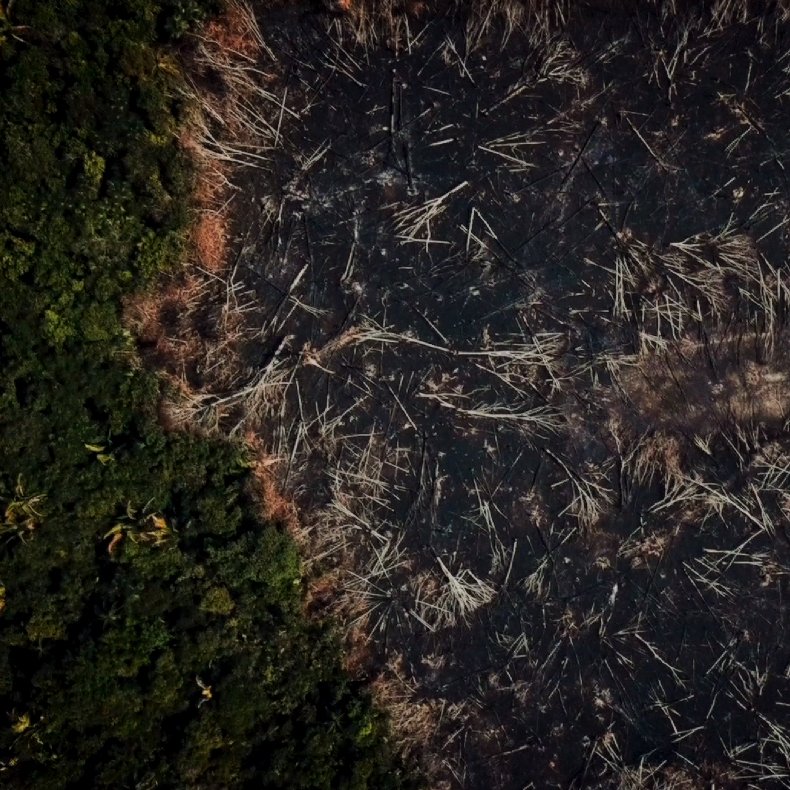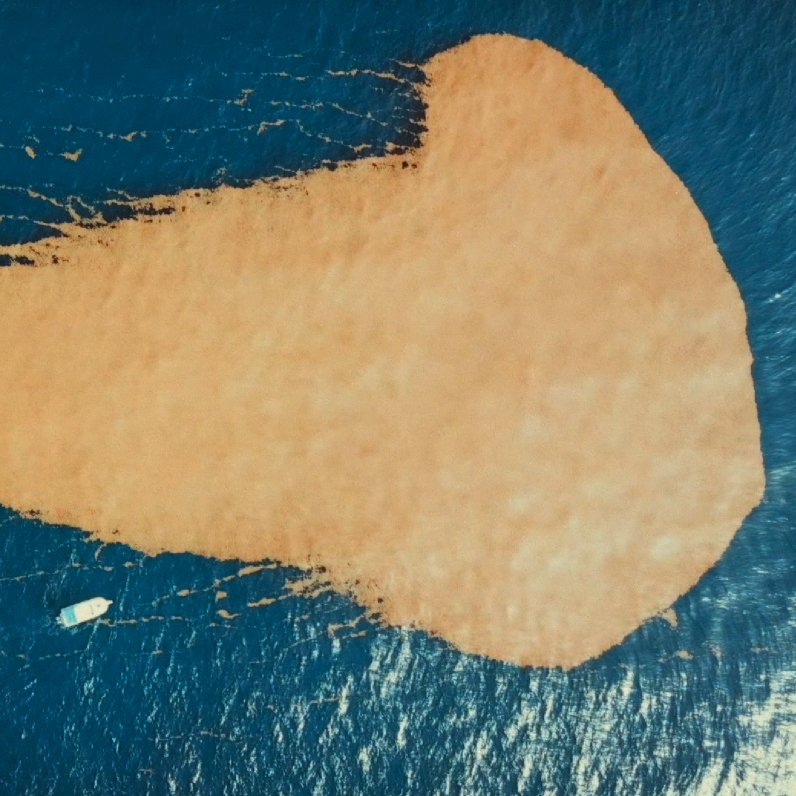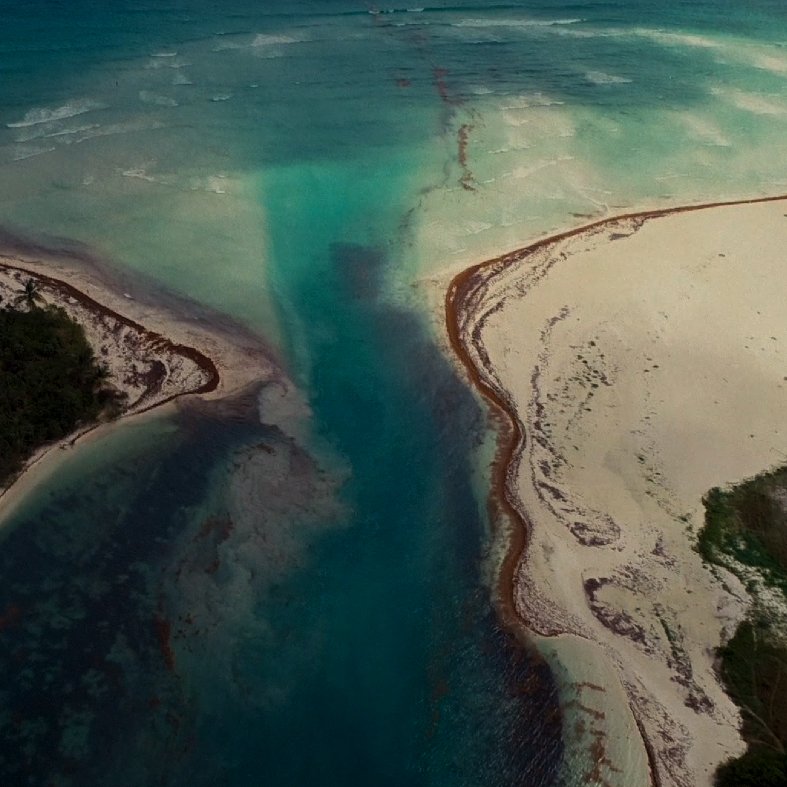Destruction of the rainforest and the consequences for the ocean
In Brazil, Rio Negro and the Amazon river converge. The amazon river is surrounded by rainforests, the largest on earth. Storing green carbon, a crucial defense in this climate crisis. Housing at least 10% of the world´s biodiversity.
The forest is being cut down, burned an uprooted, used for agriculture, cattle grazing and farming. Topsoil runs off the degraded land bringing excessive nutrients to the Amazon river. The Amazon river flows 6,400 km to the ocean draining half of the continent into the Atlantic.
Increased nutrients create an algae growth epidemic in the Caribbean Sea and the Atlantic ocean.
A sargassum algae invasion, an algae belt stretching more than 8,000 km.
Decomposing sargassum depletes ocean oxygen creating dead zones. Affecting marine life negatively. Sargassum lands on the beaches - also in Mexico - covering turtle nesting sites - some place huge amounts. Turtles can´t lay eggs there. No eggs, no baby turtles!
Rotting algae releases toxins and nutrients. This is damaging the coral reef, killing seagrass. The impact of deforestation flows thousands of kilometers from the Amazon to the Yucatán Peninsula in Mexico.
Water crosses the coastline in both directions. Seawater flows up to 10 km inland fed by rainwater the aquifer sits on top of the seawater.
Below the jungle the water meets. Lighter freshwater sits on top of saltwater. Polluting one pollutes both. Water seeps through the porous rocks, the pure rivers are polluted by fertilizers from golf courses, by chemicals from construction sites, from septic tanks and treatment plants. Untreated wastewater enters the aquifer.
Sargassum is collected on the beaches, dumped in the jungle and left to rot. It all poisons the underground rivers. Pollution creates bacterial mats. This immense aquifer flows from inland to the sea, mangrove tideways also flow to the sea. Mangrove forests store carbon effectively, wastewater runs directly into the rivers.
The water should be clear. Not polluted and infested with bacteria. It all flows into the ocean, making it´s way to the reef.
Recent research has found noroviruses in cenotes. Viral diseases cause vomiting, diarrhea or worse. This is the tap water used for washing food, brushing your teeth, cooking, washing, swimming and everything else.
What can be done?
Keep the aquifer clean
Stop deforestation
Protect the rainforest
Protect the ocean
Honour agreements
There is no planet B
Care for it all
Or lose it all
Care
Act
Now!
Support our work with a donation!
- Let us help our partners in Brazil to buy forest areas in the Amazon region and to protect them permanently!
- Let us help the coastal communities in Mexico to use the algae masses in a sustainable way!
- Let us help the ocean by using ways to sustainably use the huge biomass of Sargassum!
You can help!
Donation Account:
Foerde Sparkasse
Lighthouse Foundation
IBAN DE36 2105 0170 1003 9417 52
BIC: NOLADE21KIE
What can we do?
Whether you are at home somewhere or in Mexico or in in Brazil you can do something to make this world a better place:
Eutrophication is a global problem that is also manifested locally. The loss of biodiversity is directly related to it. And Biodiversity means stability of our global life support system. Eutrophication is also a symptom of industrialization. The promise of current industrialized agriculture and fisheries industries is simply not true. Both are destroying the long term ability to feed the people on the planet. Fertile soil is eroded productive aquatic ecosystems are suffocated.
What can you do?
At home
- Eat and source regional: The Amazon gets destroyed because of the global food and mining industry.
- It is the hunger for cheap meat, soy beans and for cheap biofuels, minerals and plant oils that eats up the rainforest.
- Eat less meat: It is not only much more healthy but it really shrinks your contribution to the global dilemma considerably. If you want meat, buy organic.
- Use public transport whenever possible
- Get a renewable energy source
- Start your own project or become part of a local initiative
When you travel
- Travel less far
- Stay at an environmentally friendly place that is locally owned
- Set off your carbon footprint
- That is the least you should do
While you are there
- Shop locally and don’t feed the global industries by just eating and buying the same stuff you also get at home.
- Be there while you are there.
Overall:
- Buy less crap, it is quality not quantity that counts.
- We all overconsume much too much. Don’t be reduced to be a just consumer become a citizen.
- Practise solidarity not protectionism
- If you can share at least a part of your wealth, locally and globally.
- But don’t be too relaxed.
- Thousand small steps will not bridge the gap to a sustainable world.
- Global political change is needed. Be political, speak up!
What we need now!
In Mexico:
Expansion of the terrestrial part of the Sian Kaan Reserve to cover and protect one of the most important aquifers of the peninsula.
Expansion of the terrestrial part of the Sian Kaan Reserve to cover and protect one of the most important aquifers of the peninsula.
The underground rivers in Yucatan are mainly threatened by the large scale tourist development of the area. This creates the massive overuse of all resources and as a result the contamination of the aquifer. Which in the end also kills the reef.
This has to stop and we have little time. Large scale development projects like the Maya train will open new areas for development and it is most likely that the local population will not benefit from this at all.
We need to secure the areas that are yet not contaminated by industrial scale tourism and agriculture. Sian Kaan as a large area is a good point to start but what is needed is to double the size of the terrestrial part for the common good. This area does not need to be fully protected in the contrary it can be an area where sustainable practice can show how people can live as stewards for the land. We propose a trust model based on local and indigenous stakeholders that guarantees that a sustainable climate friendly development is possible. Participate...
In Brazil:
Creation of Buffer Zones along the big river systems to reduce Eutrophication
Eutrophication through deforestation is a problem little looked after on a global scale. We now see that this is another consequence of the rapid global change and we have no time left to act. Besides combatting the elimination of the amazon rainforest by global industries and greed we need at least buffer zones along the rivers that protect the river systems.
If we protect at least 60.000 ha per year that is just one 1% of what is cut down in the same period. But it will make a huge difference for the eutophication of the river system and the ocean. For that purpose we will work together with the existing rainforest groups. Participate...
In the Ocean:
Once the million tons of sargassum reach the shores dealing with the problem gets even more complicated. In the same way as new innovative ways of cleaning up the plastic pollution in the oceans are invented we need to address the vast amount of algae. And there might be a chance that we can even use them as a renewable source for energy, biochemicals etc. This seems much better then growing kelp in critical habitats to make biofuel. Participate...


